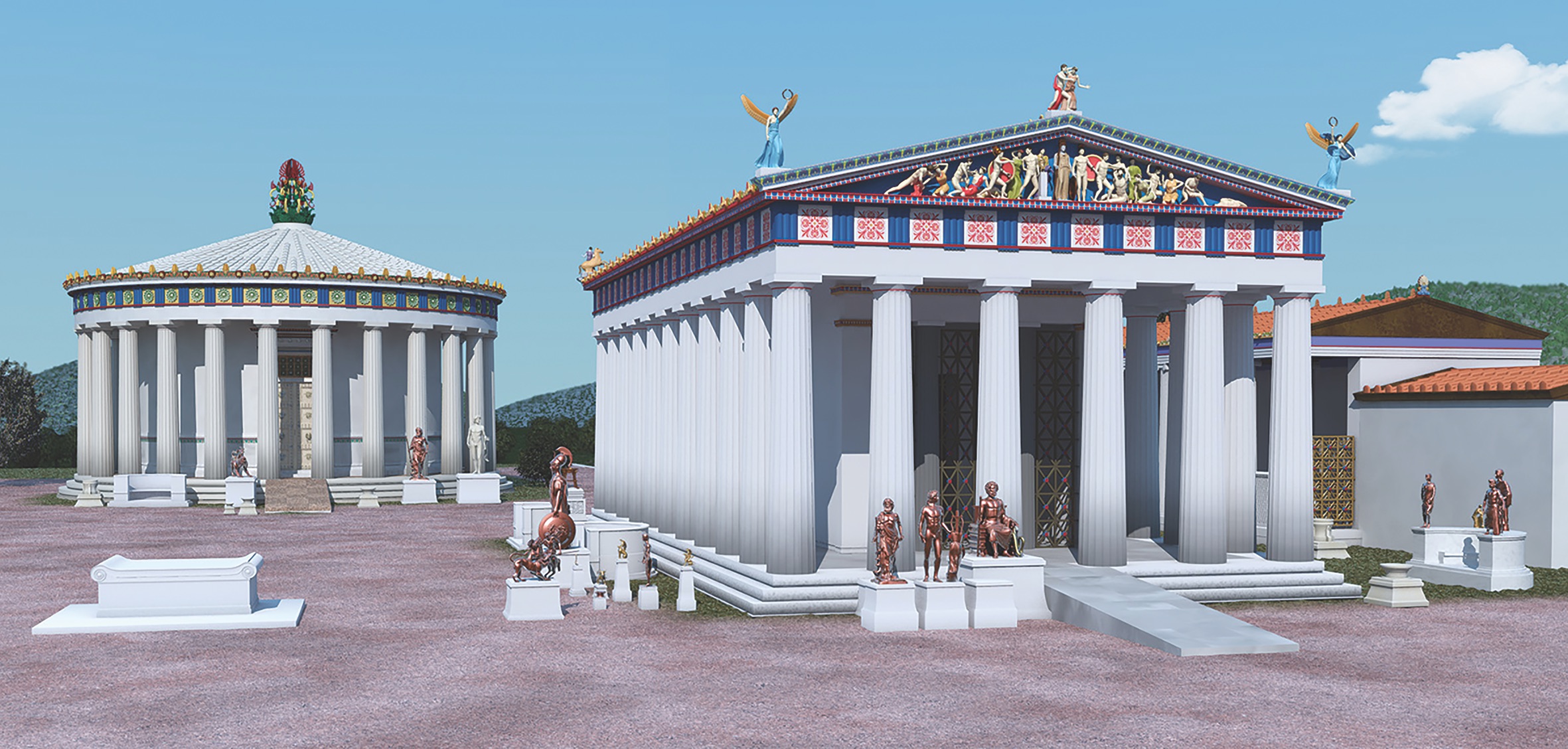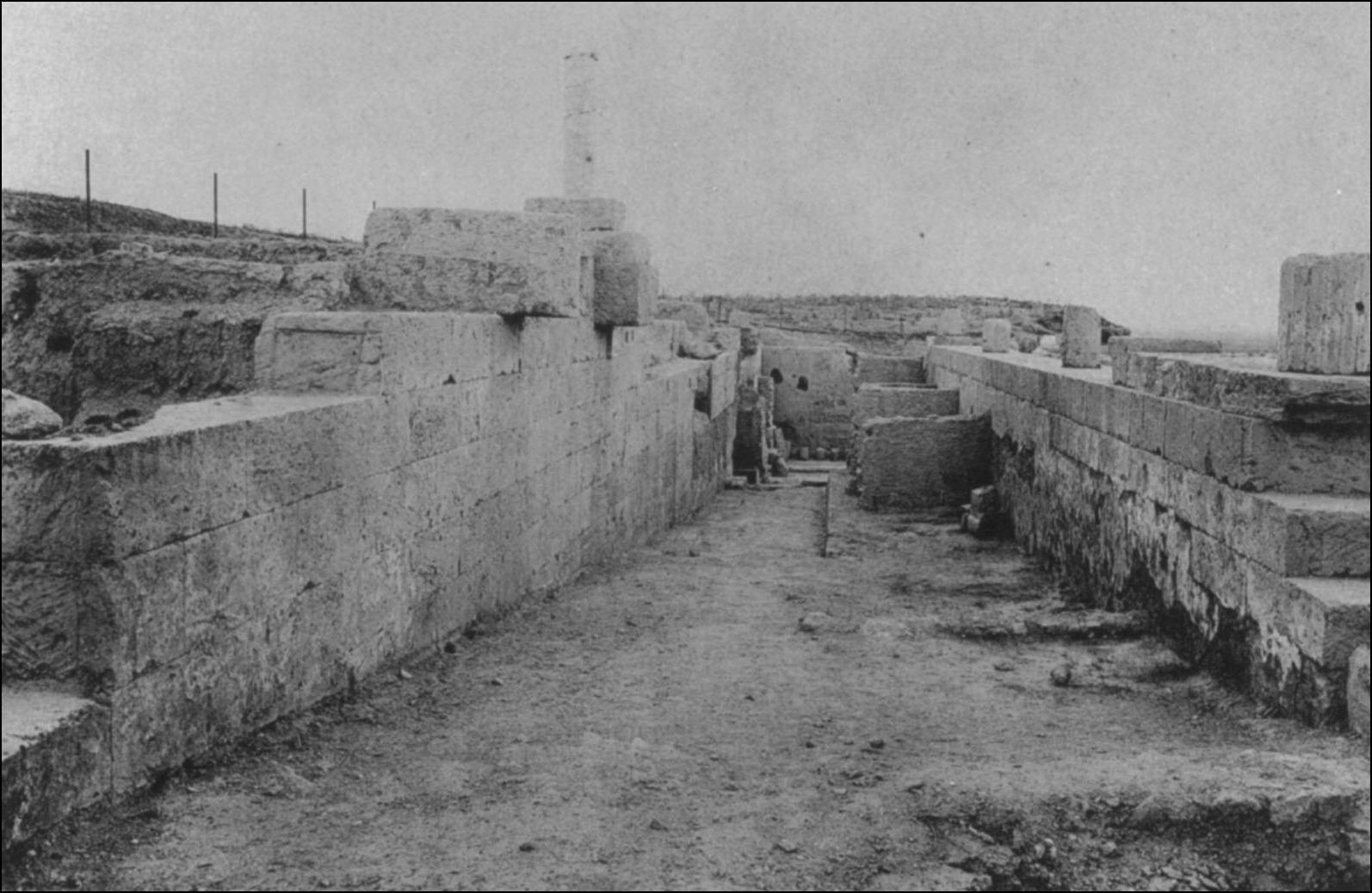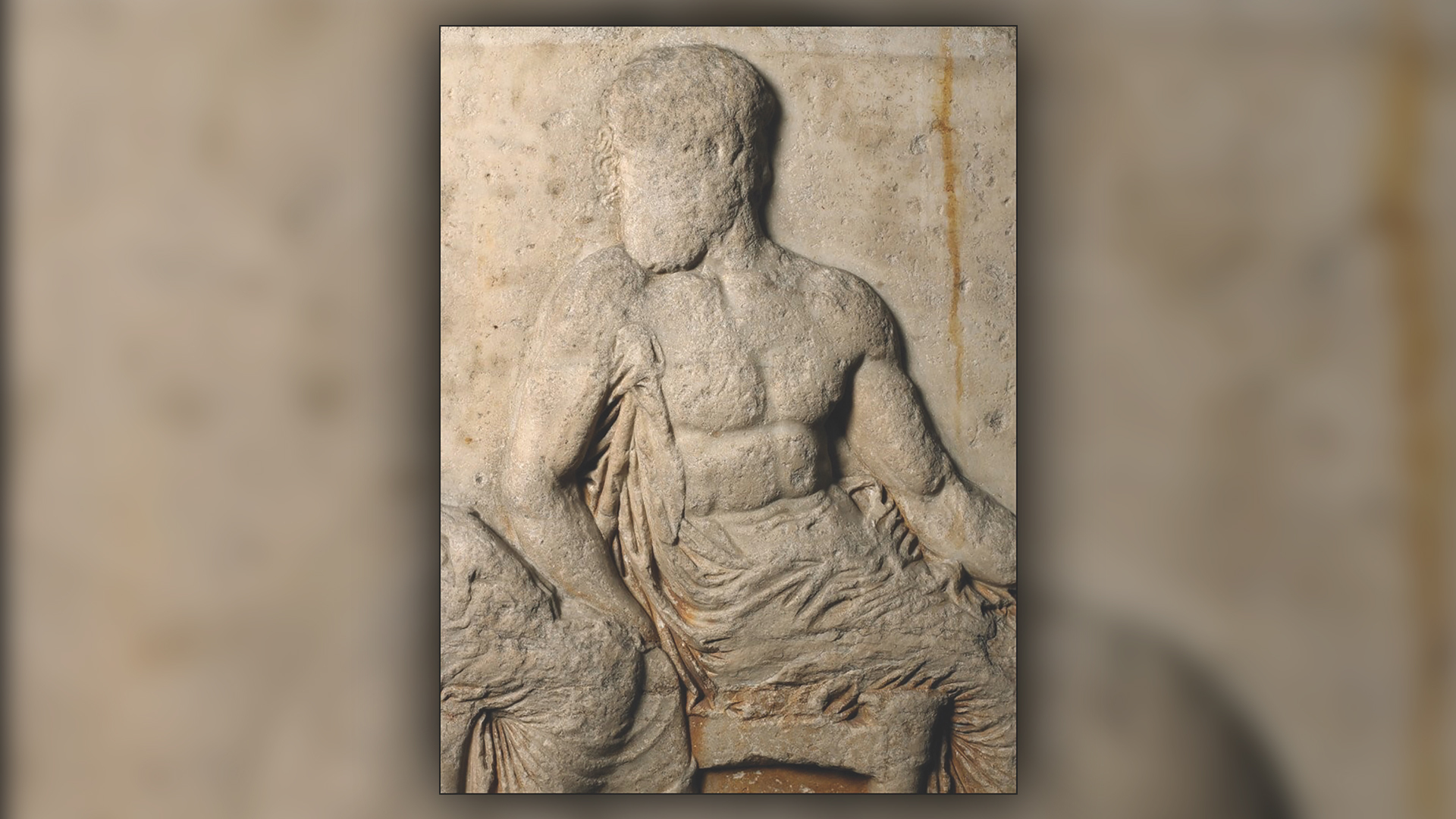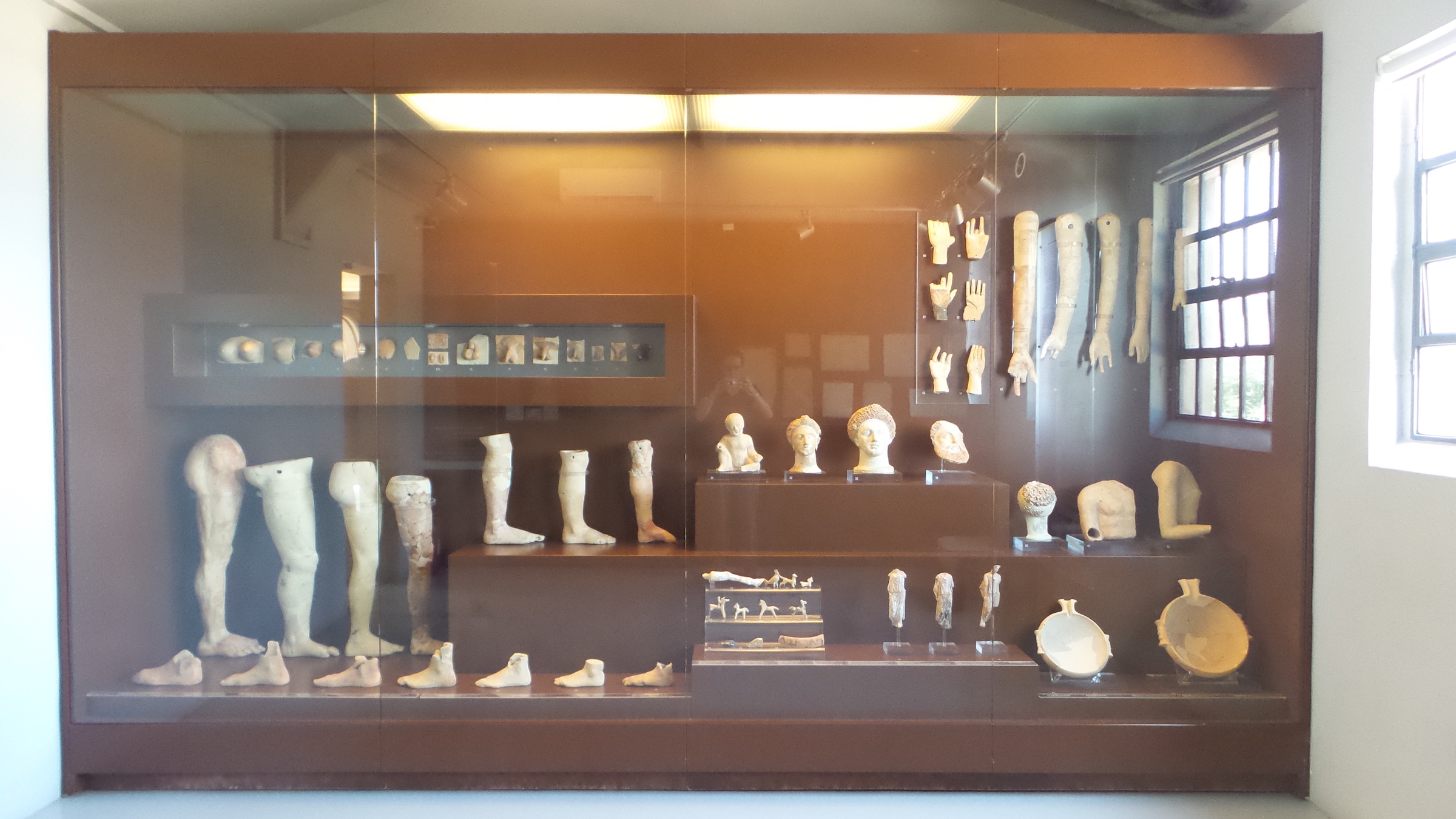Ancient Greeks may have built 'disability ramps' on some temples
"The ancient Greek world was not some progressive utopia, but we do see some interesting solutions" for the disabled.

The ancient Greeks didn't construct temples just for able-bodied people; this ancient society purposefully built ramps at some of its temples — especially at healing sanctuaries — so that people with disabilities could access the sites, a new study suggests.
Some of these ramps date back to before the fourth century B.C., and they were likely used by other people with limited mobility as well, including the elderly, pregnant and very young, said study researcher Debby Sneed, a lecturer of classics at California State University, Long Beach.
"It seems clear that the most reasonable explanation for [these] ramps is that they were intended to help mobility-impaired visitors access the spaces that they needed to experience religious healing," Sneed told Live Science in an email. "This shouldn't surprise us, really: The Greeks built these spaces for disabled people, and they built the spaces so that their target visitor could access them."
Related: Photos: Mysterious ancient tomb in Amphipolis
Until now, archaeologists had largely neglected to study ramps in ancient Greece, Sneed said. She took an interest in these sloping surfaces while doing a project on disability accommodations in ancient Greece. Her research showed that the disabled were acknowledged and cared for, at least partly, in ancient Greece.
For instance, in the fourth century B.C. in Athens, "the city provided a regular maintenance payment for adult male citizens who were disabled and could not support themselves because of their disability," Sneed said. "We know about this payment primarily because we have a speech, delivered by a man who says he walks with the aid of two crutches." This man had been accused of welfare fraud, so he was "defending both his disability and his inability to support himself because of it," Sneed said.
Despite these maintenance payments, "I want to be clear that the ancient Greek world was not some progressive utopia, but we do see some interesting solutions," Sneed noted.
Get the world’s most fascinating discoveries delivered straight to your inbox.







As part of her research, Sneed looked at ancient Greek healing sanctuaries, which were destinations for people seeking treatments or cures for both permanent and temporary health conditions, including eyesight problems, troubles conceiving, pregnancy issues, nefarious poisonings, leg and arm injuries, and developmental issues in children (one man, for example, brought his nonverbal child to a healing sanctuary in search of a cure, Sneed said). Then, she realized that many healing sanctuaries had one thing in common: ramps.
"I was familiar with ramps, but most religious (non-healing) sanctuaries have just one ramp, maybe two," she said. "When I looked at the most important healing sanctuary in Greece, the Sanctuary of Asclepius at Epidaurus, I found that there were at least 11 permanent stone ramps that provided access to nine different structures," once renovations for the building began in 370 B.C.
Installing ramps required extra money, resources and space, so they were likely built to serve a much-needed purpose, she said.
Multipurpose ramps?
Previously, scholars tended to attribute ramps found in ancient Greece as a conduit for sacrificial animals, dedication ceremonies to the gods that involved heavy objects or construction. "[But] these explanations are not satisfactory," Sneed said. "In the first place, sacrificial animals only rarely went into temples: They were slaughtered on a ramp outside of the temple and had no reason to be led inside."
Secondly, temples did have dedications to the gods, but buildings whose dedications involved heavy materials (called treasuries) never had ramps, so ramps could not have been used for this purpose, Sneed said. Finally, the Greeks used cranes and other hoists during construction, not ramps.
Related: In photos: 8 new shipwrecks discovered in Greece
"So, given that these traditional explanations don't really work, and the ramps show up much more often in contexts where we know there were a lot of disabled people, the likeliest explanation is that the ramps were built with the needs of disabled people in mind," Sneed said. That said, it's possible these ramps served multiple purposes, she said, just as today's ramps are used by people in wheelchairs, travelers pulling suitcases, bicyclists and parents pushing baby strollers.
The study's argument is a compelling one, said Mark Wilson Jones, a professor of architecture at the University of Bath in England, and the author of "Origins of Classical Architecture: Temples, Orders, and Gifts to the Gods in Ancient Greece" (Yale University Press, 2014), who was not involved with the research.
"Although there may be some other uses for the ramps, the point of the article is well made especially as regards healing sanctuaries," Wilson Jones told Live Science.
However, while ramps were popular at healing sacularies, they were still relatively rare in ancient Greece. One survey of doric-column temples found ramps at fewer than 20 of them. Of these, most temples have just one ramp leading to the main building, which makes the 11 ramps at the healing Sanctuary of Asclepius at Epidaurus all the more extraordinary.
Given these small numbers, "it would be necessary to have a bigger sample group in order to have some statistical grounding to the findings," that healing sanctuaries tend to have ramps that were likely built for the disabled, Wilson Jones said.
Sneed noted that her research shows how important it is for the field to include a diversity of scientists. Perhaps one reason the ramps in ancient Greece had never been assessed for serving the disabled is because "many archaeologists are not physically disabled (or don't identify as physically disabled), so they aren't regularly thinking about issues of access in the course of their daily lives," she said.
The study was published online today (July 21) in the journal Antiquity.
Originally published on Live Science.

Laura is the managing editor at Live Science. She also runs the archaeology section and the Life's Little Mysteries series. Her work has appeared in The New York Times, Scholastic, Popular Science and Spectrum, a site on autism research. She has won multiple awards from the Society of Professional Journalists and the Washington Newspaper Publishers Association for her reporting at a weekly newspaper near Seattle. Laura holds a bachelor's degree in English literature and psychology from Washington University in St. Louis and a master's degree in science writing from NYU.


